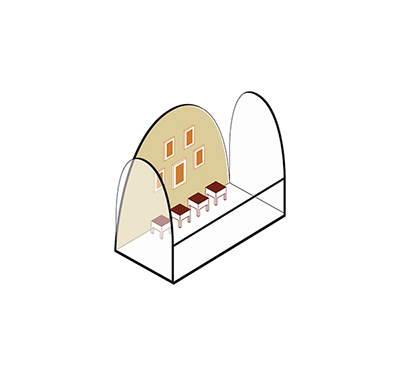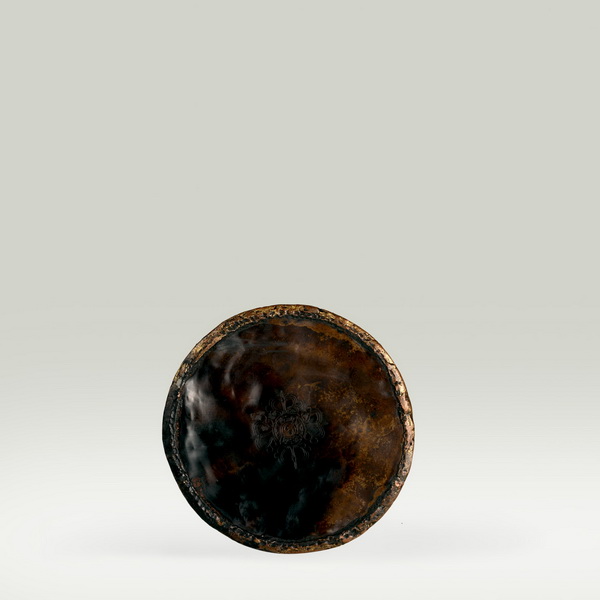Vijaya Stupa – The “Stupa of Complete Victory”
See it in the Museum

Emporium
Orientation 2
Furniture 4

ABR 015
Code: ABR 015
Country: Tibet (south or central)
Style:
Date: 1400 - 1500
Dimensions in cm WxHxD: 15 x 29 x 15
Materials: Gilt copper
Vijaya Stupa – The “Stupa of Complete Victory”
The stupa, or chöten in Tibetan, is a significant religious monument in Buddhism and serves as a reliquary for the remains of eminent masters. Stupas are also portable works of art created from precious materials, as is the case here.
In Tibet, stupas all share a similar general structure with symbolism associated with the elements: a stepped square base for earth, a cylindrical “vase” for water, a conical spire for fire, a parasol for air, and at the top the sun and moon representing space and wisdom. Tibetan stupas are often found in groups of eight. Each of the eight stupas represents one of the eight most important events in the life of Buddha, which is expressed in eight different shapes. These events were: the birth at Lumbini; the victory over Mara at Bodhgaya; his first teaching at Sarnath; the miracle at Shravasti; the descent from Tushita Heaven at Sankasya; the taming of the raging elephant at Rajgriha; the prolongation of his lifetime at Vaishali; and his extinction at Kushinagara.
This gilt copper stupa is a model of the original Vijaya Stupa “the stupa of Complete Victory” at Vaishali in today’s northeastern India. The shape of the Vijaya Stupa is usually described as possessing three circular unadorned steps. This stupa commemorates the following event: at the age of eighty, reaching towards the end of his life, the Buddha accepted to extend his lifetime by three months on the demand of a lay devotee named Tsundra. This stupa is said to have been commissioned by the celestial beings to celebrate the event.
(Ref. Robert Beer 1999 p. 135)
The stupa, or chöten in Tibetan, is a significant religious monument in Buddhism and serves as a reliquary for the remains of eminent masters. Stupas are also portable works of art created from precious materials, as is the case here.
In Tibet, stupas all share a similar general structure with symbolism associated with the elements: a stepped square base for earth, a cylindrical “vase” for water, a conical spire for fire, a parasol for air, and at the top the sun and moon representing space and wisdom. Tibetan stupas are often found in groups of eight. Each of the eight stupas represents one of the eight most important events in the life of Buddha, which is expressed in eight different shapes. These events were: the birth at Lumbini; the victory over Mara at Bodhgaya; his first teaching at Sarnath; the miracle at Shravasti; the descent from Tushita Heaven at Sankasya; the taming of the raging elephant at Rajgriha; the prolongation of his lifetime at Vaishali; and his extinction at Kushinagara.
This gilt copper stupa is a model of the original Vijaya Stupa “the stupa of Complete Victory” at Vaishali in today’s northeastern India. The shape of the Vijaya Stupa is usually described as possessing three circular unadorned steps. This stupa commemorates the following event: at the age of eighty, reaching towards the end of his life, the Buddha accepted to extend his lifetime by three months on the demand of a lay devotee named Tsundra. This stupa is said to have been commissioned by the celestial beings to celebrate the event.
(Ref. Robert Beer 1999 p. 135)


